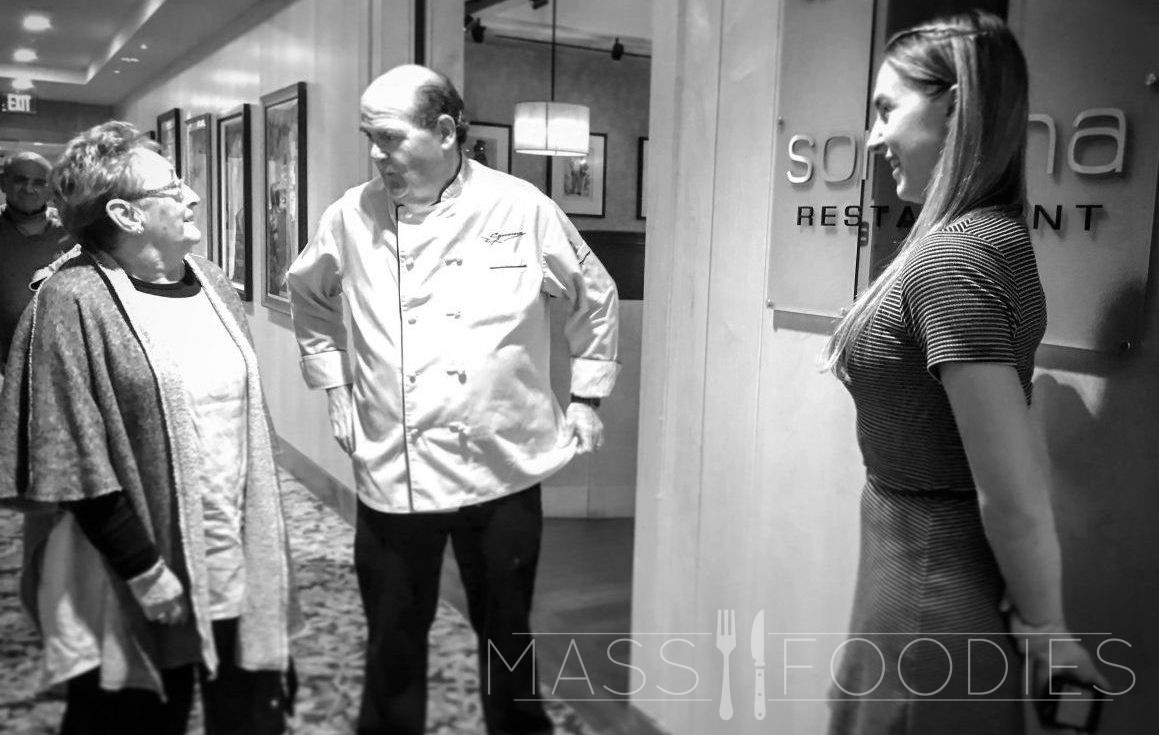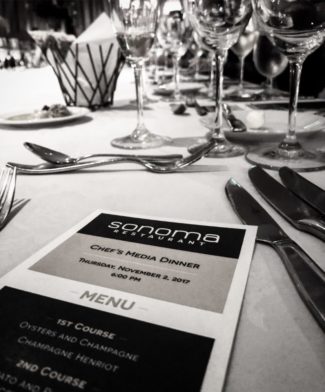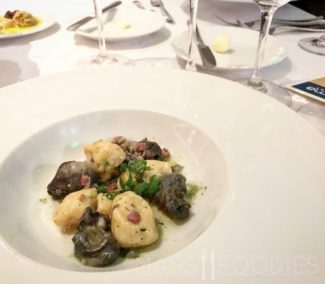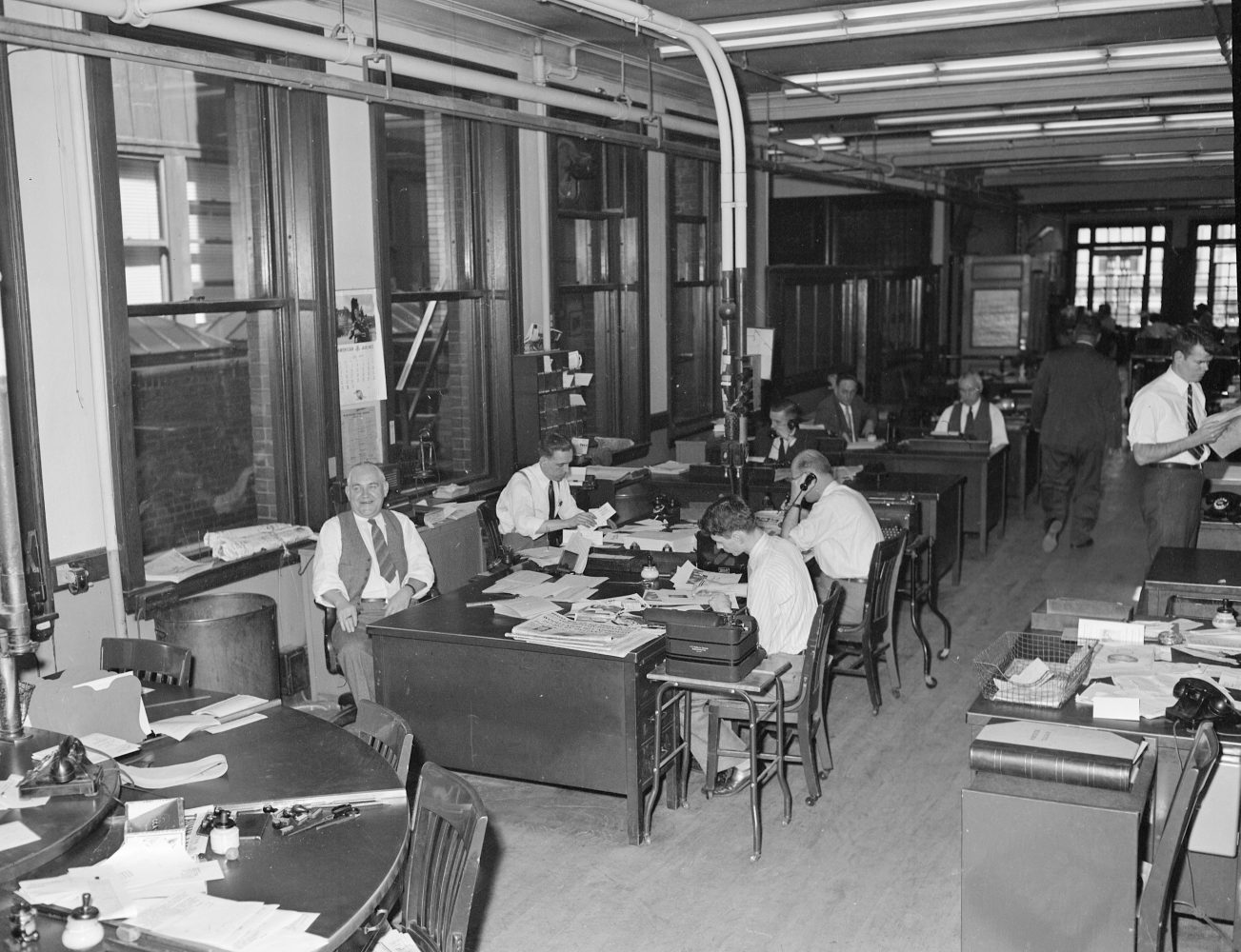
Featured Photo: Telegram and Gazette Newsroom (May 19, 1949) from the George Cocaine collection at Worcester Historical Museum, Worcester Massachusetts.
Mass Foodies is dedicated to supporting the underlying principle that the foundation for strong restaurants is an adaptive and collaborative community.
New England’s second largest city is grappling with the reality of crowd sourced-restaurant reviews and a shrinking local media. In 2018, the title of Food Editor is virtually non-existent in mid-size metropolitan newsrooms across the country. Still, the appetite for food content remains insatiable. Food is a vehicle for culture.
Dynamic reporting has the power to animate conversations, lend voice to the disenfranchised, and hold parties accountable. Food writing, in particular, examines diversity from a universal entry point.
Grains preserve the breaking of bread. Vegetables evoke tenacity. Meat begs mortality. Fruit arouses pleasure. Worcester knows how to eat.
Endangered Editors
Barbara Houle has been Worcester’s preeminent food writer since the days when dining was considered “women’s news” and “having social media” meant piling into a car with Julia Child for an impromptu reporters’ road trip. “She was a friend,” Houle says of the famous chef and television personality, adding, “She always asked what was going on in Worcester when she saw me. At that time, there weren’t as many restaurants, but she was especially interested in our vocational school.” Houle has brushed elbows with plenty of celebrity chefs and food personalities over the years, including James Beard whom she encountered on several occasions over the course of her time with Worcester Telegram & Gazette.
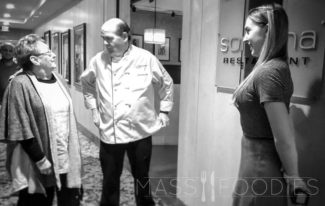
Houle still writes a highly regarded food news column each week for Worcester Telegram & Gazette as a freelance contributor, but of her editorial peers from the dawn of her career, she is the only one left standing. “I keep going,” she explains, taking a sip of her coffee at the counter of the Table Talk Pie Outlet on Green Street, “Because when you’re in it so long, especially today with all of these restaurants opening in Worcester. It’s still kind of exciting, you know?”
The immediacy of online journalism doesn’t appeal to Houle personally, but she can understand why outlets have grown so competitive. And, while she thinks of herself as a newspaper columnist, it’s not lost on her that most people access her work via their mobile phones. Houle still taps into Worcester’s timeless curiosity because restaurants are a microcosm of the city’s cultural identity. “Even if people don’t eat out all the time, they just want to know what’s going on,” she says.
As for criticism, she’s cognizant that a bad review can break a local business, but she’s always honest. “Your job is to get it right. You have to go back more than once,” Houle insists. As a rule, she never reviews restaurants anymore.

Hospitality growth has quickly emerged as one of the first indicators of the city’s rejuvenation. Fifty-four common victualer licenses were awarded in 2017 alone, allowing establishments to cook, prepare, and serve food throughout the city of Worcester. New York City, arguably the food capital of the world, is located only 170 miles away. Furthermore, it is rare for a mother-metropolis like Boston to sit a mere 42 miles from its second-city. In this case, close proximity has allowed for a new generation of chefs to incite mass migration from Boston to Central Mass in favor of cheaper rents and eager investors. (See: Kummerspeck, deadhorse hill, and B.T.’s Smokehouse.)
Every chef wants to open his or her own spot with their ’40 Under 40′ eligibility intact and Worcester is happy to accommodate. The public school system is doing its best to keep pace by churning out a skilled kitchen workforce complete with food safety certifications. Worcester’s robust culinary arts educational pathways have always been ahead of their time. (Julia Child knew it.)
In Worcester, the food business is booming. The food writing business is not.
Stop the Presses
Houle had many contemporaries when she began her career as a food editor, but the title has grown increasingly rare as major food-focused publications like Gourmet Magazine and Lucky Peach have shuttered their presses.

“Doc” Willoughby at “Beyond the Plate,” a food symposium hosted at Edgewood Farm in Truro in June 2018.
Ruth Reichl served as the Editor in Chief of Gourmet for a decade up until it folded in 2009. Before that, she was the restaurant critic at both The New York Times and the Los Angeles Times. Reichl has received six James Beard Awards over the course of her career. At “Beyond the Plate,” a food symposium hosted by Truro Center for the Arts in June, she reminisced about growing up with Gourmet in the 40’s and 50’s before it grew “stodgy.” At that time, great literary writers like Ray Bradbury were given room to breathe in the magazine’s pages. Reichl watched Gourmet turn into what she calls, “One of those magazines for rich people to plan their vacations and figure out what recipes to give to their cooks.” When she was approached about becoming Editor in Chief, she told publisher Condé Nast, “I want to write about race and gender. I want to write about food as culture. It seems to me that the magazine has a monotone voice.”
Reichl accepted the job under the condition that Gourmet would incorporate a diverse range of contributors. “I want to talk about the issues that really matter,” she told the publisher.
“At the time, we were all interested in genetic modification,” she remembers. She made her approach clear to Condé Nast stating, “I’d like to get people to write on both sides of the issue. I do not want to do this polite magazine like things have always been.”
The publisher gave her their blessing, but many longtime Gourmet subscribers saw the new guard as pretentious. “If you have David Foster Wallace writing for you. It’s ‘elitist,’ right? If you’re writing about bioethics, it’s ‘elitist.’ I mean, we were asking people to bring their minds to the magazine and I think as it changed from being ‘lifted pinky’ to more intellectual, people still considered it ‘elitist,’” Reichl recalls.
There was one subset of readers that Reichl relished reaching more than anyone: the cooks. The best writers understood this most of all. “It’s really interesting to me that when we were fighting with David Foster Wallace about the edit of ‘Consider the Lobster’ there were some references that we couldn’t live with. He argued over every comma – literally,” she remembers.
Reichl said to him, “Look, this piece is brilliant. Anyone will publish it, you know you can take it to The New Yorker, you can take it to Harper’s; you will not have a problem finding a place for this wonderful article. But, you want to publish it in Gourmet because you want to reach the cooks. You want every person who is about to put a lobster in a pot to think about what it means to put that lobster in the pot. And so we came to the foundation.”
The present state of food writing pains her for one simple reason. “The important pieces about what’s going on at the farms and food history and culture are not being put into places where cooks have easy access to them. I think that’s a problem,” she says.
Reichl sees food as a serious subject. “I mean, we all know that the food supply is in trouble and we know that community is about food and the whole way that the world looks at food has changed. A whole generation of kids have grown up thinking of eating as an ethical issue and that is a huge change,” she says. Unfortunately, ethics rarely pay the bills.
“We knew that the Internet was important,” Reichl recalls. She begged for Gourmet to have a standalone website, but all of the food content from Bon Appetit, Parade, and Gourmet went into a different holding called Epicurious. When Gourmet’s website finally came online, it cost millions of dollars. Despite the price tag for twelve full-time cooks, a videographer, and eight state-of-the-art test-kitchens, Epicurious continued to collect the advertising revenue for every recipe.
Gourmet’s Travel Editor at the time, William Sertl, recalls the birth of clickbait. “Numbers on the covers were always important,” he says, “Someone asked when are you going to stop doing ‘twelve of this,’ and ‘fifteen of that’?”
Condé Nast’s reply was simple: “When it stops selling magazines.”
Gourmet’s Executive Editor John “Doc” Willoughby adds, “If you looked at Eater until recently, it was crap. It’s just, ‘Here are the seven restaurants you absolutely have to be at tomorrow.’ It’s the worst approach to food.” Willoughby applauds writers like Helen Rosner of The New Yorker who adhere to the editorial process and take the time to write well-researched food stories.
As one of the most esteemed restaurant reviewers in American history, Reichl understands the gravity of criticism in the age of Yelp. “I think the few remaining paid restaurant critics are probably the best critics we’ve ever had because they have to be so much better to merit being paid and they’re good writers and researchers and they’re knowledgeable, which is new,” she says. Reichl actually applauds Yelp’s role in cultivating smarter consumers of information who will question a reviewer’s motivation or incentive.
When asked how she leveraged honesty to readers with the economic impact negative reviews have on small businesses, Reichl grew starkly serious. “When I was a critic, I was very focused on the fact that my readers were who I worked for. I did not work for the industry.” Her reviews were not written for “wealthy white men.” Reichl wrote for everyone, not just for rich people.
“When I went to the LA Times, it was kind of scary because I was suddenly a voice,” she remembers. Reichl kept a photograph of a poor young couple by her desk and imagined it was she and her husband at the start of their marriage when they were living in a commune and could only afford to eat at a restaurant once a year. “Every time I was inclined to pull my punches, I would think, ‘You know something? I’m going to send them to a restaurant just that one time and I have to tell the truth,’” she says. “Nobody believes you if you only write good things. I mean if you can’t write negative reviews, you shouldn’t be doing it. You just have to tell the truth or there’s no point to criticism,” she concludes.
Can Minor League Baseball Save Food Media for our Gateway City?
Print media may be dying in 2018, but the flow of real-time communication has heightened tenfold. In Houle’s tenure, Worcester Telegram & Gazette has been passed around between everyone from The New York Times Company to Red Sox owner John W. Henry. At current, the Telegram is at the hands of juggernaut Gatehouse Media. According to their website, Gatehouse publishes 145 daily newspapers, 340 community publications and more than 570 local market websites that reach 23 million people each week.

Worcester is a “Gateway City,” a midsize urban center that anchors Central Massachusetts’ economy. Historically, when manufacturing jobs receded in the area, resources followed suit. This effectively left Worcester rich with what MassINC refers to as ”unrealized potential.” A solid media presence is inextricably linked to economic development.
In a landscape where all of America’s newspapers are being scooped up by billionaires, the local beat (food and otherwise) has grown increasingly sparse. When the Boston Red Sox’s Triple-A affiliate announced in August that they would move to Worcester by 2021, the region clamored for diligent coverage. The Minor League Baseball story drew national media attention to Worcester with unprecedented optimism. With the ballpark’s construction price tag hovering at $240-million, a journalistic frenzy ensued.
The ballpark design will be overseen by Larry Lucchino and Janet Marie Smith who are purportedly the foremost leaders in ballpark design in the country. Lucchino and Smith are responsible for the return of urban ballparks following decades of suburban relocation. The City of Worcester’s plan emphasizes, “The ballpark will be designed to seamlessly fit into the Canal District and complement the existing feel of the area.” If all goes according to plan, preserving the neighborhood’s character will prove a top priority.
The Red Sox deal includes 65,000 square feet of retail and restaurant space in addition to market-rate apartments and two hotels. With the infrastructure laid for millions of dollars in restaurant development, the time is ripe for writers who can illuminate food as culture in a city struggling to realize its potential.
New England is no stranger to the package marketing of sports and food. In 2013, the region’s most-watched sports network launched a successful weekly television show called Dining Playbook. There’s no telling what the Worcester Red Sox might bring in terms of new media, new restaurants, and new opportunities, but it seems clear that the city has effectively positioned itself for a rebirth of economic success.
Lessons from Gourmet Magazine
If Worcester is to learn anything from Condé Nast’s mistakes, it is that food writing extends well beyond top ten lists and recipes. Moreover, there is no sense in critiquing each and every corporate restaurant that will inevitably make up a sizeable chunk of the 65,000 square feet of a ballpark development deal. Reviews are intended for professionals who set a high bar and demand specific standards. Just because 54 new restaurants open in a single year doesn’t mean each one must be immediately assessed in print. Evaluative press should be reserved for a particular caliber of establishment.
In Worcester, it seems every eatery warrants a review. If food writing is to survive, it must become a vehicle for serious conversations about farms, culture, and sustainability. Worcester can learn from entities like Eater who began as nothing more than reputable clickbait and now pull in James Beard nominations by the fistful. The necessity of advertising revenue and a wide range of consumer needs requires a place for corporate chains on superlative fried pickle lists and pre-game guides, but establishments looking to be reviewed seriously should self-identify.
Julia Auger, General Manager of deadhorse hill in Worcester, pointed out recently that The New York Times’ restaurant reviewer, Pete Wells, has likely dined in thousands of establishments but he wouldn’t dare review them all. Auger labors the point that receiving even one star from The New York Times means something. The fact that Wells chooses to review a restaurant makes for good press in and of itself, regardless of how many stars he bestows.
Writing about food means writing about discovery and survival. There is room for meaningful storytelling. What’s more, local coverage cannot simply cater to residents of Worcester’s wealthy West Side and its suburbs; to endure, content has to speak to the cooks. Worcester’s food media must be honest if it is to succeed.
Believe it or not, Yelp has cultivated a smarter age of consumers. Executive Director of Discover Central Mass Stephanie Ramey sees expectations growing as organizations set out to plan meetings and conferences in the city of Worcester. “Beyond wanting function facilities with size and technological specifications, they want culture and experiences,” she says. And it’s not just the usual suspects. “There are so many different restaurants; we have a really eclectic assortment. Often, we find neighborhood places to highlight when we push content out and people ask, ‘Why didn’t you include this place?’” Ramey has doubled down on her utilization of the community’s eyes and ears. “People want authentic experiences,” she acknowledges, adding, “There was a time when you had to leave the city to try new cuisine. Now we are pulling people here. People are hungry for what’s next.”
A comprehensive report released by the Seven Hills Foundation in 2015 revealed that “Worcester is home to an estimated 37,970 immigrants from 85 countries, which make up 21 percent of the city’s total population.” The majority of these foreign-born residents arrived after 1990, shaping the city of Worcester into a model for multiculturalism.
For food writing to succeed in Worcester, it cannot be polite. It cannot speak in monotone. It cannot smack of pretension. As the city enters its next phase of development, dining will clue us into the culture we have built for ourselves as a community. There will be a place for corporate giants, but they cannot become the loudest voices. When our ethnic markets, our farms, our butchers, and our beekeepers have tales to tell, it is our obligation to lift them up. Large media outlets will be wise to listen for them over the din of construction and recognize that food writing can serve to safeguard Worcester’s progress. To echo the declaration of Boston Red Sox legend Pedro Martinez earlier this week, Worcester is not just the heart of the Commonwealth – it is the heart of New England.

